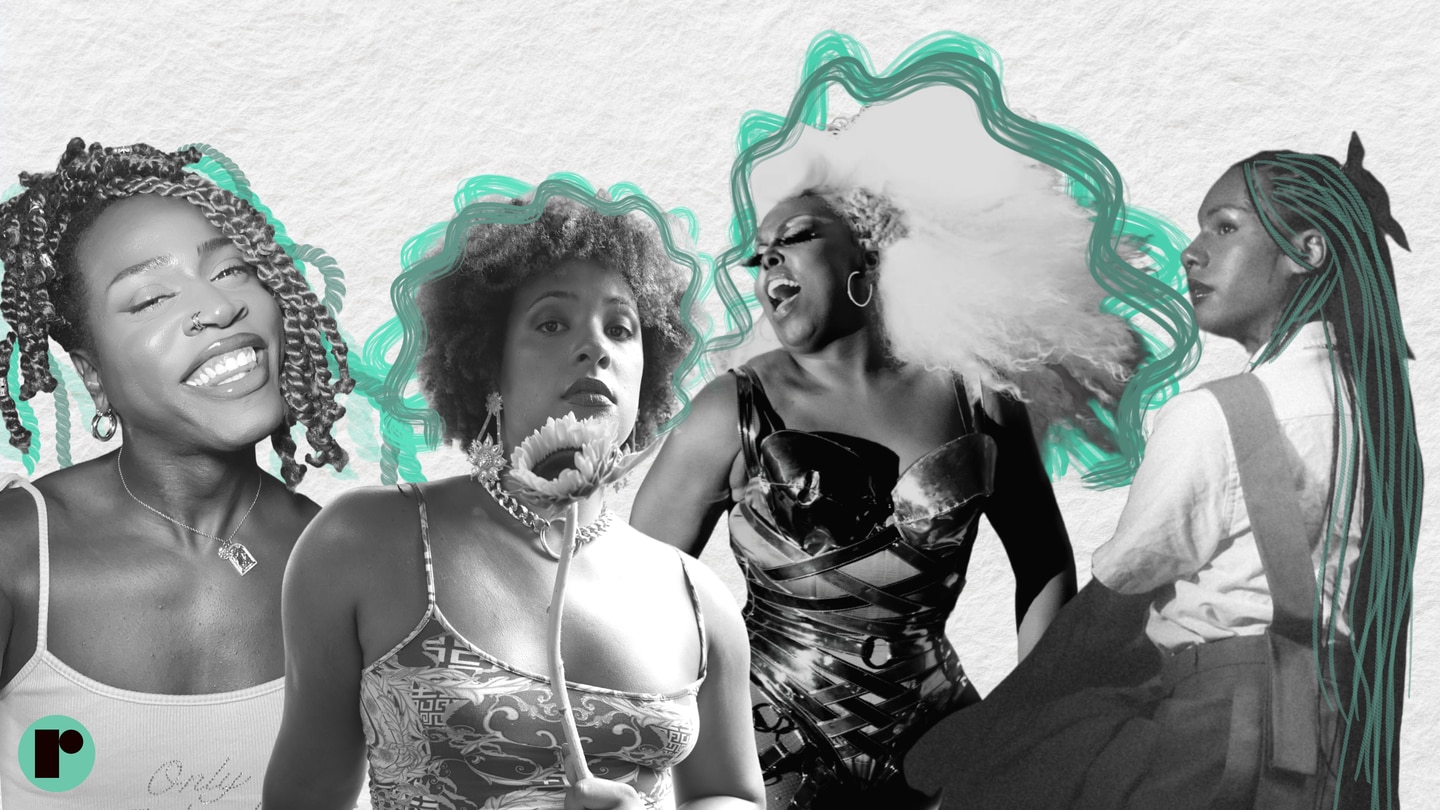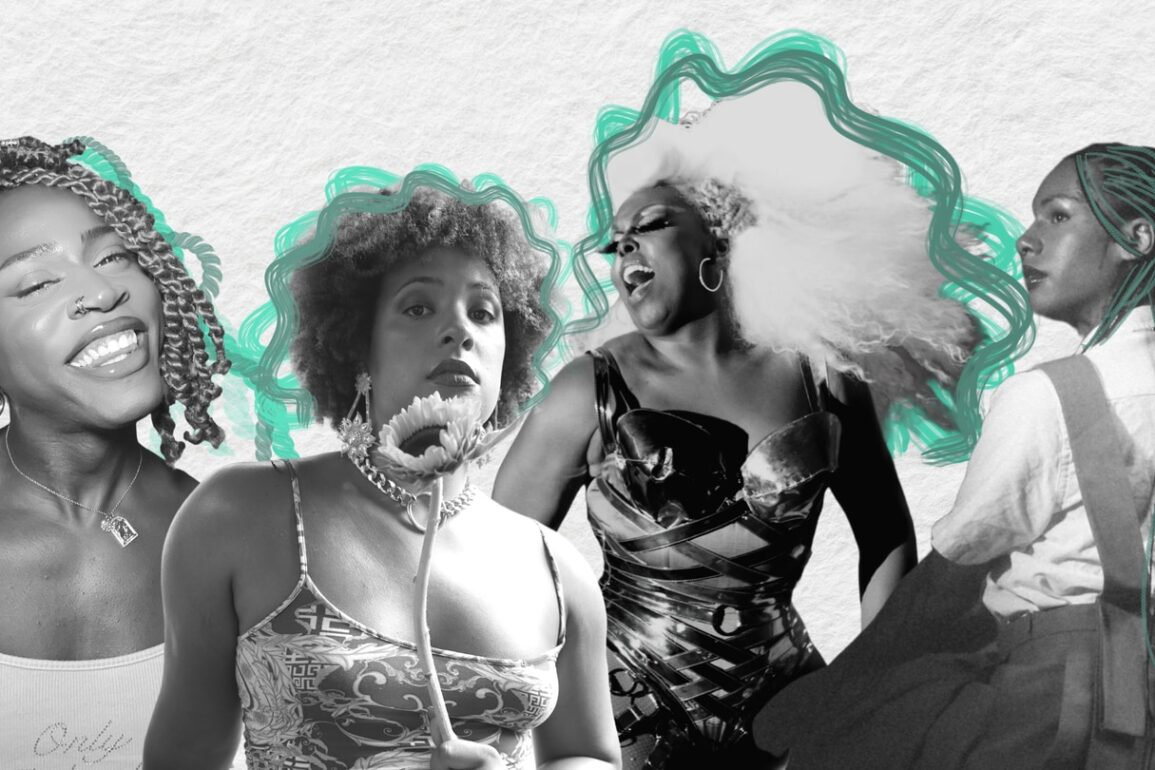
When Ivana Fischer started her transition, she was asked, “Where’s your hair?”
For Black trans women and trans femmes, like Fischer—who are already under scrutiny over the validity of their womanhood and femininity—conversations around hair are even more precarious.
Black hair has been politicized for centuries. Recently, a TikTok video went viral when a furniture restorer found slave hair inside of a 200-year-old chair that was used as stuffing. In Terrytown, La. school, a Black student with twists for hair was sent home from her private school for not complying hairstyle guidelines despite having worn her hairstyle for two years.
Amidst the historical politicization of Black hair, contemporary incidents continue to highlight the complexities and challenges faced by individuals with Afro-textured hair.
Even as early as this summer, Sha’carri Richardson removed her wig to reveal her braids right before her race, and eventually won the 100M sprint at the U.S. National Championships. Richardson went on to explain that it was her symbol of comeback, having just been left off for testing positive for marijuana, which added fire to the fuel of racist comments against her and her infamous orange hair.
Given that Black trans women and trans femmes face particular and compounding challenges, their relationships with hair serves as a lesson to the larger conversation around hair discrimination and identity.
So in honor of World Afro Day, which aims to tackle hair discrimination, Reckon is honoring what Black trans women and trans femmes have to say about their hair journeys, from the intricacy of colorful braids to the simplicity of rocking an afro.
Fashion and beauty model Sophia Hernandez (she/her) calls herself a “chameleon” for her limitless hairstyles—though that wasn’t always the case.
Born to a Mexican mother and a Black father, she grew up in Fort Lauderdale, Fl. with no guidance on how to care for her 3A hair texture. Having yet to transition wasn’t of much help either, as she believes it played a part in her not being taught how to take care of her hair. In her teenage years and into her early 20s, she frequented alternative spaces where most people happened to be white or didn’t have her hair texture.
“I felt ashamed because my hair was a big curly afro,” said Hernandez, adding that her peers were bewildered and touching it without her permission. “I felt like a circus animal, so I always hit it with a straightener and didn’t know what irreparable damage I was getting myself into.”
It wasn’t until Tumblr’s infamous #BlackOutDay in 2015 where Black users on Tumblr circulated their own selfies that Hernandez was able to see herself in others who rocked curls in alternative spaces. She took liberty of experimenting with her hair; from bleach to box dyes and impulsive chops, her hair allowed her to rock a new look every time, though it came at the cost of her hair’s health. Today, she refuses to dye her hair, no matter how tempting.
“In this moment, my hair means freedom,” said Hernandez, adding that getting creative with hairstyles in a healthy way has allowed her to showcase and even expand more on her individuality and who she is. “I’m proud to be Black and proud of being able to have the ability to do whatever I want with my hair. And no one can take that from me.”
Currently, Hernandez is growing out a mullet and rocking out several protective hairstyles in the meantime.
“It grows back,” she said, offering advice to other Black trans women and trans femmes who aspire to be a chameleon, too. “Have fun.”
Adopted and raised by white parents, Ianne Fields Stewart (they/she) is a Birmingham, Al., native who identifies as a queer, nonbinary trans femme lesbian.
Growing up, Stewart didn’t have a relationship with their hair. “I was that embarrassing child whose parents sent them to Supercuts for a haircut,” they said. “I didn’t like how they touched my hair, but I didn’t really know where to go.”
Over time, they grew their hair “wild and messy,” and it took going to college and feeling activated in their identity to start to develop a different relationship to their hair. The last time they went to a barber and cut their hair was that senior year, in which they didn’t cut their hair for almost four years.
Stewart tells Reckon that as they were starting to express themself differently through clothes, they were also starting to find folks like Janet Mock and Tracee Ellis Ross—Black women who wore their natural hair.
At the time, in 2019, Stewart was witnessing a “particular social activation around identity”, allowing them to step into an awareness of their own identities, including all things hair.
Stewart reflects on their hair journey, and how their hair care growing up was never meant to serve their own fulfillment; it was for other people. Now that they’ve transitioned, they sometimes feel a lot of pressure to wear a wig like other trans women they’ve seen.
“I like being able to throw my head underwater and it being okay. I like not having to worry about my hair getting wet,” said Stewart, who describes their natural hair journey as an echo of their feelings. “When my hair feels dry or unmanageable, I think that my insides feel dry and manageable.”
Ultimately, their haircare is a reflection of something much deeper: self-acceptance, self-love and self-care.
“I didn’t realize what my hair was saying about me until I just wanted it to say something different,” they said. “I want people to see my hair and admire it or think that it was beautiful—just like I want anyone to look at me, admire me and think that I was beautiful.”
As a child, Miles Jai’s (she/they) hair was always shaved. Jai is a Los Angeles-based nonbinary trans femme whose presence on YouTube since 2011 has garnered them over 600,000 subscribers.
Jai always felt indifferent about their hair—at least until fifth grade when they grew it out for the first time. Although it was fun for them, they lacked the information to know what to do with their hair.
“Eventually it started stressing me out because I would need help combing it out, and I remember crying because I wanted to cut it off,” they said. “I was so tender headed!”
In ninth grade, Jai chemically straightened their hair without their parents’ permission, which marked the start of their transition. “The way I acted and presented myself changed, and I allowed myself to be more me,” said Jai, who got bolder over time with their hairstyles, from extensions, to bleaching, dyeing and even a wig review series. “It was really fun!”
Jai tells Reckon that hair is their playground and a way to express their identity and how they feel on a given day, though they noticed that people’s perspective of them changes depending on what their hairstyle is.
Back in 2017, Jai released a video titled, “SOMEONE PUT GUM IN MY HAIR.”
On a night out clubbing, they happened to be androgynous-presenting, or “in a gender limbo,” as they phrased it in the video. While dancing in one of the rave rooms, a person passed behind Jai and stuck gum in their hair. To Jai’s benefit, it was a wig that the gum was stuck to.
“I was violated in a public space, and I was angry and embarrassed about that moment,” said Jai, noting that it was their favorite wig. Since there was nothing they could have done about it, Jai resigned to staying and ended up having a good rest of the night regardless. “Wearing a wig saved my actual hair that night! Clearly someone wanted me bald.”
This incident shifted Jai’s perspective on the susceptibility of being a Black trans person in public, especially when it comes to hair. “Leave it the fuck alone,” they said. “Unless you’re Black and/or trans, I don’t want you near my hair, talking about my hair—unless it’s a compliment—or touching my hair. I am very protective over it.”
Akeelah Blu (she/her) was forced to get a haircut because she was not allowed to grow her hair out until she was 14. Blu is a trans drag performer based in Huntsville, Al., whose performance debuted on season 2 of We’re Here where Bob The Drag Queen was her drag mother.
When she started to grow her hair out, her younger sister Tamara practiced hairstyling on Blu.
“She just got better and better, so we just started experimenting,” said Blu, who wore yarn braids—not only because it was a protective style, but also because it was gender-neutral. “[My sister] got so good at it that people started asking her to do their hair.” Now, Blu’s sister does hair for a living, including styling Blu’s hair in and out of drag.
Although Blu always wanted long hair, she put transitioning in the back of her mind out of the need to make a living, which also meant holding off on colorful feminine hairstyles.
“I saw only two futures for me: if I transitioned, my full-time job would have been prostitution or credit card scamming because that’s like the only way I will be able to make money as myself,” she said. “No one was going to hire me—this was 2006; there was no type of salvation for people like me.”
Her yarn braids, then, were a piece of identity she could hold onto, as it “made me feel like the woman that I was in a very undercover way.”
Since her cameo on We’re Here, she’s taken on the art of drag performance full time, having found a new passion. She tells Reckon that hair is not only a part of her, but also a part of her performances and shows. “It’s my crown,” she said.
Blu wishes for non-Black people to do research and try to understand Black hair because it’s natural. Once that part is achieved, the simple fun and pleasure of hair can begin.
Blu puts it succinctly on behalf of Black trans women and femmes who value hair—of all kinds.
“When I get my hair done, I feel like a brand-new bitch.”
This post was originally published on this site be sure to check out more of their content.








